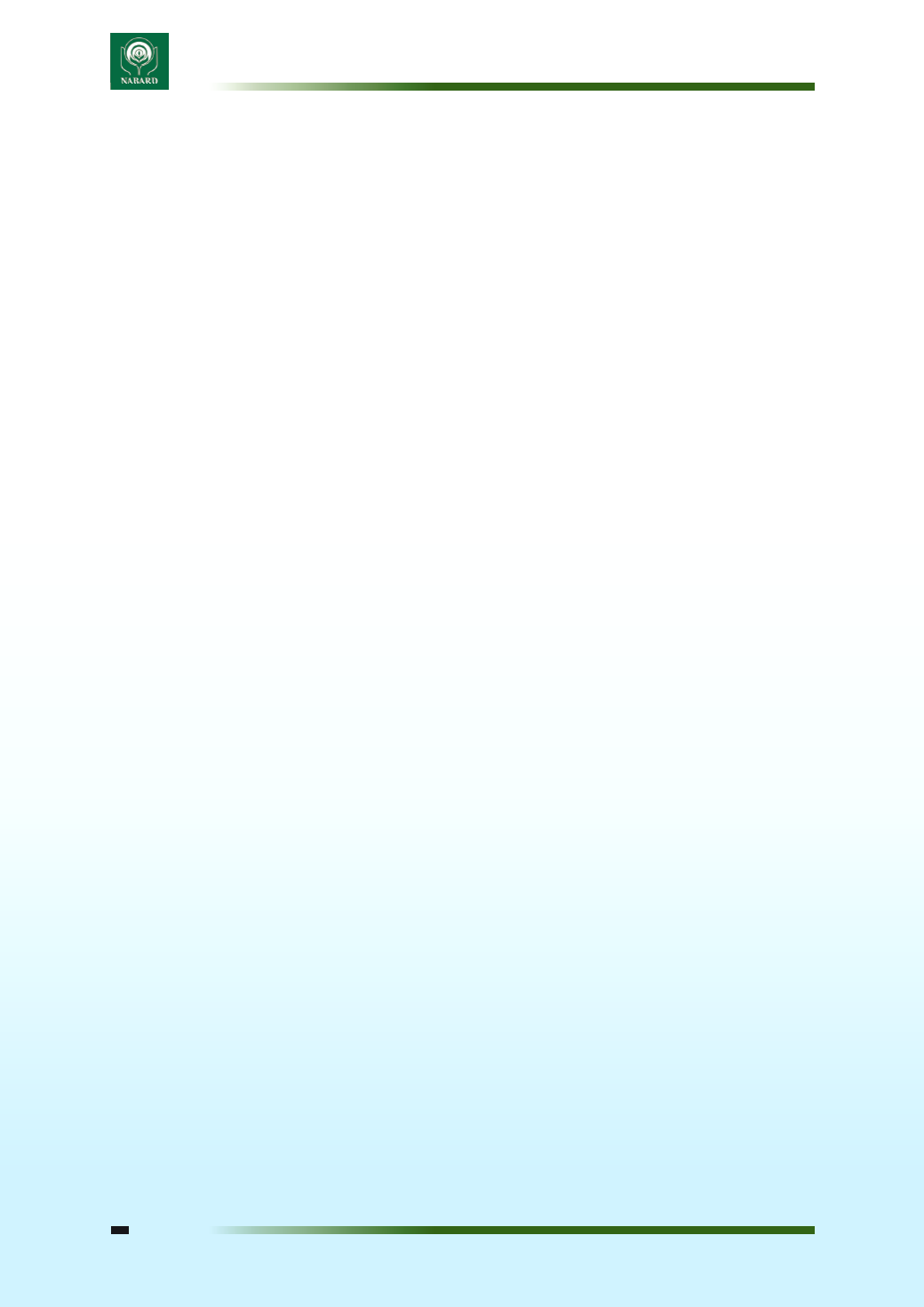
110
Sources of data :Primary data: The primary data is collected from the farmers of the selected districts.
The data for drip irrigation has been collected from farmers who were cultivating sugarcane under
drip irrigation in the districts of Kolhapur and Ahmednagar and from farmers who were cultivating
cotton under drip irrigation in Aurangabad district. The data for farm ponds has been collected from
farmers having the presence of a fully built farm pond in their fields and cultivating any crops in the
districts of Ahmednagar and Aurangabad. The data is extracted with the help of designed questionnaire.
Secondary data is collected from the published sources like economic survey, statistical abstract etc. for
the supporting the results of the present study. The secondary data figures provide the guideline and
insight for planning and implementing the research work.
Method of research included extended data mining and analyzing the irrigation trends using advanced
statistical and business analysis tools in Microsoft Excel. Paired t tests were used whenever required
to compare the effect of water management practices on various agricultural indicators. The results
were used to provide suggestions and recommendations for further growth in the efficient use of water
managements systems by farmers and development in sustainable, inclusive agriculture.
Major Findings:
a. Drip irrigation:
• Average sizes of farms in Kolhapur, Ahmednagar and Aurangabad districts were 6.157, 13.069 and
4.803 acres respectively.
• Out of the villages surveyed, 55.33% and 88.18% of area under sugarcane cultivation in Kolhapur
and Ahmednagar districts respectively and 91.94% of area under cotton cultivation in Aurangabad
district has been irrigated by drip irrigation.
• The average income per acre for sugarcane cultivation was Rs.146622 and Rs. 115016 at Kolhapur
and Ahmednagar respectively and for cotton cultivation was Rs. 56296 at Aurangabad district.
• Out of the total farmers surveyed, 66.67%, 33.33% and 31.58% in Kolhapur, Ahmednagar and
Aurangabad districts respectively had previous knowledge about drip irrigation.
• Two companies namely Jain and Netafim are playing a prominent role in supplying equipment for
drip irrigation.
• Average total cost per acre for using ISI quality drip irrigation systems was Rs. 57671, Rs. 45634 and
Rs.33961 at Kolhapur, Ahmednagar and Aurangabad districts respectively.
• Average loan amounts received per acre by the farmers for drip irrigation systems was Rs.53273.47,
Rs. 31060.29 and Rs 28612.24 at Kolhapur, Ahmednagar and Aurangabad districts respectively.
• Average subsidy per acre was Rs. 16145.7, Rs. 14513.52 and Rs.17272.97 at Kolhapur, Ahmednagar
and Aurangabad districts respectively.
• Out of the farmers surveyed, 62.96%, 77.78% and 78.95% of them reported a delay in receiving their
subsidies.
• Average yield under sugarcane before drip irrigation was 38.89 tons per acre at Kolhapur and 38.33
tons per acre at Ahmednagar districts and after drip irrigation was 71.96 tons per acre at Kolhapur
and 54.89 tons per acre at Ahmednagar districts. Average yield under cotton before drip irrigation
was 7.67 quintals per acre and after drip irrigation was 13.54 quintals per acre.
• Post drip irrigation, an increase of 85% and 43% in sugarcane yield at Kolhapur and Ahmednagar
districts respectively and an increase of 77% in cotton yield at Aurangabad district was observed.
• Advantages of drip irrigation were- efficiency in fertilizer use when given through drip, reduction in
water usage and labour input, reduction in pests and weeds, increased yields and incomes.


